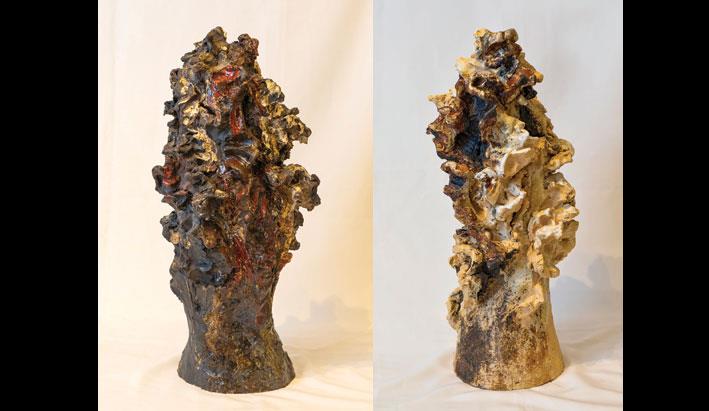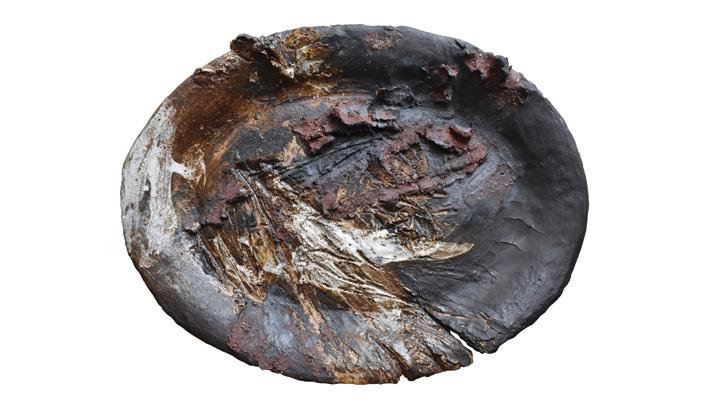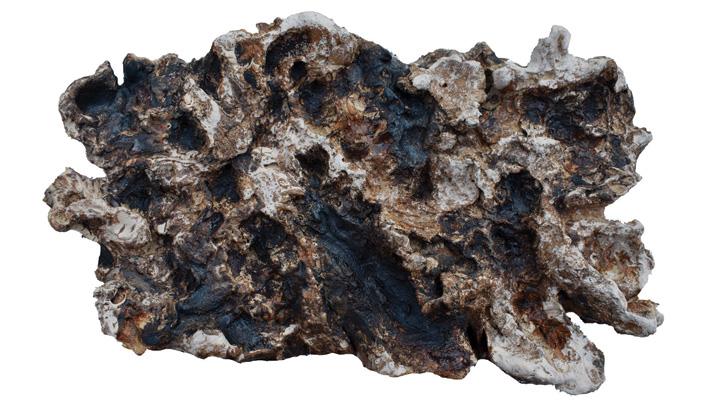At il-Kamra ta' Fuq, we are hosting our first solo exhibition by a Gozitan artist, and a great one at that. Victor Agius is presenting his exhibition Heart of matter, running till Easter Sunday.

I have worked with Victor before, in past editions of the Mdina Contemporary Art Biennale and he was also one of the artists in our collective exhibitions at my very first intern job at Studio 104 (more recently known as Desko), many exhibitions ago. In the past months, we worked together on two of my collective exhibitions - A Midsummer's Red Dream, held at BOCO Boutique hotel and also the collective But I see beauty, held last October at San Anton Palace, in aid of the Malta Community Chest Fund.

Like some artists, Victor is one who keeps having new ideas and inspirations at the last minute before a themed exhibition starts. The suspense is always there... will the artworks actually arrive? He is not a fan of email or social media (or a spreadsheet programme), and tends to disappear a bit, but he surely delivers... and on time. This time round the exhibition timing didn't help for the studio visits, as every planned visit was cancelled due to bad weather, but we managed with quite some phone calls.

Agius is known for exploring various media in his works, including one very specific one, which I feel has become a signature of his works, the terrarossa, which is a material quite rare to come by, as it is painstakingly recovered in small quantities when it emerges during excavations at some construction sites. The terrarossa has an additional meaning for Agius' oeuvre. This pure soil, rich in ochres when mixed with water and other media, leaves permanent marks of chromatic values of red ochres. It is very durable as a pigment. Red ochre pigments were widely used in prehistoric burial rituals since prehistoric times. Through his artworks Victor is giving this material a second life and adding another layer of meaning. His installations, sculptures and earth paintings are statements and also a sense of inquiry about time, ecology, rituals and our fragility and relation with mother nature.
Speaking of prehistoric times, Victor happens to live very very near to the Neolithic temples of Ġgantija in Xagħra. This is a very important point to understand how the artist has a special connection and affinity to the primordial and nature which is so obviously translated into his artworks. During the pandemic's partial lockdown in 2020, with the kind support of Heritage Malta, he even spent a night at Ġgantija. In the area in front of this monumental structure Agius worked, performed and created numerous artworks. Parts of this ethereal experience were illustrated in the official catalogue of the Premio Faenza, which is a prestigious international Biennale of ceramics organised by the Museo Internazionale della Ceramica in Faenza, Italy. This is still an ongoing project and Agius is planning to show it on home soil for the first time in the coming years.
A number of Agius' past projects created a dialogue with specific locations such as the Mdina Cathedral, St Agatha's Catacombs and at Ġgantija in 2013, among others, his magnum opus - a public artwork very near Ġgantija, titled Ħaġarna. This 40-tonne sculpture not only is conversing directly with the temples but also creating a conversation with the whole community of Xagħra as the inauguration involved a large number of residents from Xagħra, with performances, dancing, processions, poetry, folk and contemporary music and re-enactments. Another major exhibition by Victor was In Dialogue held at il-Ħaġar Museum in Rabat, Gozo and curated by Elyse Tonna, where one could observe a constant dialogue between the museum's historic and baroque permanent collection and the interventions of contemporary pieces by Agius.
In this particular exhibition at il-Kamra ta' Fuq, Agius is conversing with the village of Mqabba and its surrounding areas. The materials used are ceramics, earth, sand, soil and terrarossa. The works evince this "formlessness" and are very abstract but the raw elements of nature are there which create again this dialogue with nature, the ancestral history and the cycle of life, "For you are dust, and to dust you shall return". Agius creates this surreal atmosphere with his works. The viewer is uncertain if the works have been executed now or if they hail from centuries ago or if they are something found in nature, as one can observe in the "organic" sculptures which I like to refer to as "corals". However, for Agius his ceramics are not mere coral formations. He speaks of his gestural and quasi ritualistic relation with clay as if he is striving to trace back memories of our ancestors concealed under the layers of Malta's sacred earth and inhabiting in the textures of our megalithic heritage.
We see the Mqabba inspiration in various ways. Victor experimented in trying to conceive the natural colour of the Globigerina Limestone, which is one of the most important resources of Mqabba, being surrounded with quarries. He managed superbly to achieve this honeycomb matt hue in a maze of intertwining matt and glossy glazes in his stoneware ceramics, as one can observe in the stunning large sculpture Bur Megħeż and the hanging plate L-Imqabba - Heart of Matter I.
He researched historical locations in Mqabba and in the nearby villages and some of these places became the titles of some of the artworks. Just to name a few, Ħaġar Qim, Mnajdra, Mintna Catacombs, Bur Megħeż along with others which are more in the artist's playground like Għejżu Cave found in Xagħra, Gozo.
Another strong influence comes from the Mnajdra area and the wild open sea just at the bottom of the cliff. This was magnificently captured in the two plates titled Mediterranea I and Mediterranea II where Agius, adding fused rich cobalt glazes and various clays created this almost bird's eye view of the rugged terrain coastal area - the golden stone colour, the pristine blue of the waters, the foam of the ferocious waves - a spectacle!
If you ask Victor which one is his favourite, he'll answer that they are all like his "kids", so he can't choose. But I do have a favourite. Actually I have five, but I'll mention a few words about one in particular. The plate titled Mnajdra is very different from the others, both in shape and materials and experimentation. The ovalish plate is made up of three different kinds of clay, which create this natural gradient of browns and dark burgundy. He also introduced some lava-like textures to create a dark grey area, and all is topped with hints of off-white glazes. There is an overall feeling of rawness but in a researched way. The material is almost thrown on the plate and a certain anger can be felt thanks to the deep scratches all over the artwork. The surface gives the impression of witnessing some interior of a Lascaux cave wall. The final touch is the tear towards the bottom of the plate
Apart from the materials that Victor is known for, we have a surprise for you. It was also a surprise for me, as I got to know about it during a live TV interview some days before the opening of the exhibition. Five of the artworks include 23K gold along with other glazes. Agius has used gold before in his works but it was applied as it is commonly done in 23K gilding. However, here, a gold lustre glaze has been applied after several initial firings of the works. The different temperatures of his kiln fuse all these elements as one, adding an aura of reverence to his earthy sculptures.
And last but not least, the exhibition title Heart of Matter is relating to the quarries around Mqabba and the excavation through the heart of the earth to find these natural materials which are so important and matter so much to Agius and his artworks.
The exhibition is curated by Melanie Erixon and is being held at il-Kamra ta' Fuq in Mqabba, until 9 April.
For more information visit the Facebook page il-Kamra ta' Fuq